Last time we explored the Uranus Pluto cycle of revolution and freedom. In this post we’ll look at the Saturn Neptune cycle which lasts about 36 years. The current cycle began in 1989 and the next one starts with the conjunction in 2025 – 2026. It enters a wide orb from 2024 and then slowly moves closer into 2025, fading out by about 2027. There are several alignments along the way but only the final one is exact. Here are the basic dates for your diary:
- May – June 2025
- July – August 2025
- February – March 2026
Settle in for the final long one…! ☕️
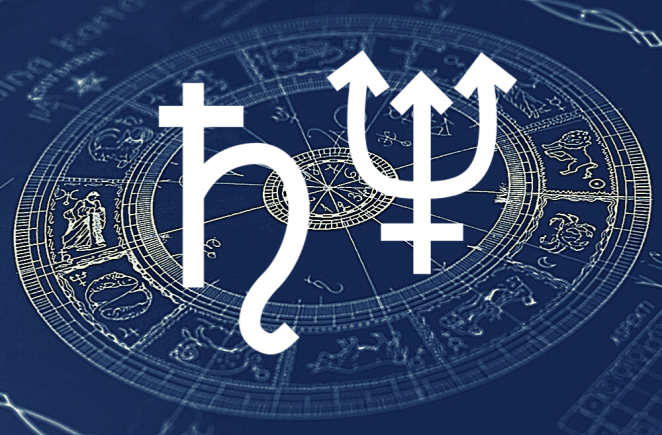
The Saturn Neptune cycle represents the manifestation of collective ideals in politics, religion and society. Each cycle lasts about 36 years and tests how well our beliefs and visions work in reality, with periods of change, inspiration and dissolution at the conjunction, squares and opposition.
Saturn represents the archetype of material reality and structure and is associated with boundaries, tradition, responsibility, authority and control. Neptune represents the archetype of transcendence and idealism and is associated with collective dreams, imagination, spirituality, and inspiration.
These are opposite realms of experience so they combine in complex ways that are often contradictory. Saturn makes things real, giving form and structure to ideas and beliefs. But he also restricts and limits dreams and ideals. Neptune dissolves the boundaries of Saturn, creating inspiration, connection and healing. But he also distorts reality and creates confusion and chaos.
These alignments blur the boundaries between the real and the ideal, between reality and illusion, truth and lies, fact and fiction, matter and spirit. At best, we can find a balance between science and religion, and realism and faith. We can transcend our limitations and turn our visions into practical realities. Neptune inspires with a utopian dream or potential, and Saturn brings it down to earth by changing the structures of society through political and economic change.
But reality rarely lives up to the ideal. Political movements start out with a belief in making life better for people and end up creating a nightmare. Religions bring faith, hope and community, but also oppression and judgement. Saturn Neptune can manifest as the mystic just as easily as the literal-minded fundamentalist.
These alignments appear to be particularly associated with left-leaning political structures, such as communism and socialism, because they strive to embody the collectivity and oneness of Neptune. Progressive ideals can inspire social justice and civil rights, but also extremism driven by groupthink and ideologies that are unconsciously religious. In these systems the individual is sacrificed for the good of the group, usually with devastating consequences.
When Saturn and Neptune get together we’re challenged to embody Neptunian values without going over to the dark side. Without balance from Saturn, Neptune can spin off into delusions and a fantasy version of reality that’s prone to collapse when it collides with real life causing disillusionment and grief. The dark side of Neptune includes political corruption, fake idealism, escapism and addiction.
According to Richard Tarnas in Cosmos and Psyche, these periods coincide with:
- The rise of utopian ideals and movements in politics and culture
- Loss of confidence and discontent with established structures or events
- Revelation of truth, seeing through an illusion, unmasking deception
- The death of a dream or loss of an ideal
- Darkening of the collective consciousness, feelings of social malaise, often in response to tragic events
- Collective experiences of loss, defeat and disillusionment, mourning and grief
- Natural disasters involving water, earthquakes, flooding, and tsunamis
- Pollution, poisoning, epidemics of disease, addiction, and drug reactions
- Outpourings of compassion, sacrifice and aid to help those in need
- Loss of faith and/or renewal of faith, visionary spirituality and mysticism
- New forms of culture in the arts, music and film that embody romanticism, expressionism, surrealism, and transcendence
To get a feel for how this cycle works, let’s explore some of the history. The dates below refer to the closest alignments of the planets but you can add an orb of about a year either side of these dates…
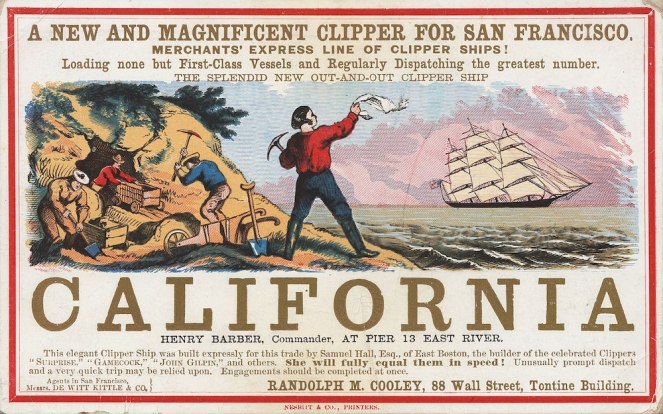
The conjunction in 1846 was when Neptune was discovered. Socialism was starting to spread and the Communist League, the first Marxist party, was founded in London in 1847. Marx and Engels published The Communist Manifesto in 1848, the same year as the first gold rush started in California. 💰
Romanticism was peaking and sensitive types were grumbling about the industrial revolution. Gothic novels and penny dreadful serials were popular. Key works include A Christmas Carol by Charles Dickens in 1843, The Raven by Edgar Allan Poe in 1845, and Wuthering Heights by Emily Bronte in 1847.
The opposition in 1862-63 coincided with the American Civil War when Lincoln gave his Gettysburg Address on the Emancipation Proclamation in 1863. Slavery was finally abolished at the end of the war in 1865. The Red Crosswas founded in Switzerland in 1864, and Louis Pasteur invented pasteurisation. Key works include Les Misérables by Victor Hugo in 1862, and What Is To Be Done? by Nikolay Chernyshevsky in 1863.
There was also an uprising in Poland in 1863 which was suppressed by tsar Alexander II by incorporating the country into Russia. He came to the throne in 1855 during the square in 1854-55, and reigned until the end of the cycle. He was known as Alexander the Liberator because he made many reforms, including freeing the serfs in 1861.
The next cycle started with the conjunction in 1882 when Alexander’s luck ran out. He had survived multiple attempts on his life but was finally assassinated in 1881, preventing further reforms. His death triggered an increase in autocratic power and a massive suppression of civil liberties in Russia.
Elsewhere, socialism continued to spread around Europe with the creation of many parties, and in 1883 Nietzsche published Thus Spoke Zarathustra in which he declared the death of God.
The cycle peaked at the opposition in 1900 with the formation of the Russian Bolshevik party by Lenin and Trotsky in 1903. Socialist parties were also formed in Britain, France and the US. Psychotherapy was born when Freud published The Interpretation of Dreams in 1899, and the same year saw the start of Monet’s Water Lilies sequence of expressionist paintings.
The birth of cinema happened with the first commercial screening of a short film by the Lumiere brothers in 1895. George Melies was also making short films using special effects and produced the iconic A Trip to the Moon in 1902. Other key works include Bram Stoker’s Dracula, The Turn of the Screw by Henry James, The Yellow Wallpaper by Charlotte Perkins Gilman, and L Frank Baum’s The Wonderful Wizard of Oz.

The next conjunction in 1917 happened as the first World War reached its peak. In Russia the Bolsheviks seized power in the October Revolution that created the Soviet Union, and the following year, the Spanish flu pandemic began to spread. In Germany, the Nazi Party was formed in 1920, and in the US Prohibition against alcohol began, running until 1933 at the opposition. 🍺
In film, this period saw the peak of German Expressionism which rose in popularity into the 1920s and became hugely influential. The first art film was a silent horror made in 1913 called The Student of Prague, and the first feature to be made in Technicolour was The Gulf Between in 1917.
By the square in 1926 expressionism and surrealism were popular in both art and film. But the ‘return to order’ movement reacted against modernist styles and the chaos of war with a swing towards the realism of Saturn. Meanwhile, the German Expressionist film Metropolis was made in 1927, and in the same year The Jazz Singer was the first film to synchronise speech and the music score. 🎵
In the UK, a General Strike was called in 1926 to support the coal miners who were suffering poor working conditions and wages – it failed. In the Soviet Union, Stalin rose to power after Lenin’s death in 1924 and gradually increased his stranglehold on the leadership of the party by 1929. And a certain Adolf Hitler published Mein Kampf in 1925.
The peak of this cycle came at the opposition in 1936-37 when fascism was growing in Europe, and in the Soviet Union, Stalin started his Great Purge in 1934, giving him total control of the party. The Spanish Civil War in 1936-39 ushered in the dictatorship of Franco, and in Germany, Hitler became Chancellor of the Nazi Party in 1933, taking the title of Fuhrer in 1934. He opened the Olympic Games in Berlin in 1936 and started World War II when he invaded Poland in 1939.
Meanwhile in the US, the Social Security Act was passed in 1935, and the same year Bill Wilson and Bob Smith started Alcoholics Anonymous. The first feature film animation Snow White and the Seven Dwarfs was released in 1937, Lovecraft was churning out stories, including At the Mountains of Madness in 1936, and JRR Tolkien published The Hobbit in 1937.
By the square in 1944-45 World War II was nearing its end with the massive bombing of Germany and the atomic bombs dropped on Japan. The concentration camps were liberated and Hitler committed suicide, leaving Berlin to be split into East and West sectors. The Nuremberg trials took place in 1945-46 for the war crimes committed by the Nazis, but in the Soviet Union, Aleksandr Solzhenitsyn was sent to a labour camp for criticising Stalin in 1945.
Film noir was becoming popular at the cinema with its pessimism and fatalism reflecting the mood of the times. Existentialist John-Paul Sartre published Being and Nothingness in 1943 and No Exit in 1944, and George Orwell published Animal Farm in 1945. 🐖
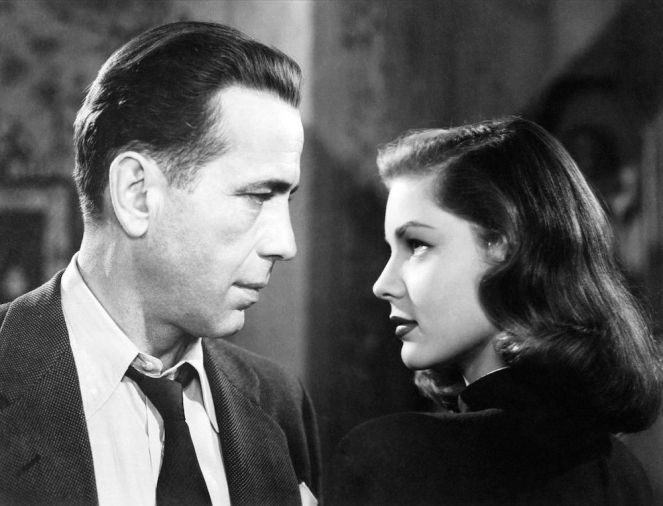
The next cycle started with the conjunction in 1952-53 during the Korean War and the rise of McCarthyism in the US. The death of Stalin in 1952 marked the beginning of the end of the Soviet Union and it collapsed at the end of this cycle. The same year saw the first major nuclear accident and leak at CRL in Canada.
Modern art was becoming more abstract and music was embracing rock ‘n’ roll and at the movies we had Singing in the Rain in 1952, and On the Waterfront in 1954, and Samuel Beckett’s play Waiting for Godot in 1953. Other key works include The Lord of the Rings by JRR Tolkien, and The Doors of Perception by Aldous Huxley.
In Germany, the Berlin Wall was built in 1961 as the square of 1963 drew near. The Cold War was in danger of turning hot when the stand-off between the US and Soviet Union flared into the Cuban Missile Crisis in 1962. John F Kennedy demanded the withdrawal of the weapons and everybody calmed down, but the following year he was assassinated for murky reasons.
After the Gulf of Tonkin incident in 1964, the US was drawn into the Vietnam War which didn’t end until the opposition. Meanwhile in the UK, the Profumo scandal of 1963 broke when the Secretary of State for War was caught in an affair with Christine Keeler, the mistress of a Soviet diplomat.
By the opposition in 1971-72, the Vietnam War was dragging on and everyone was becoming disillusioned and strung out on drugs. The US finally managed to extricate itself in 1973. Meanwhile, Nixon turned the economy of the world upside-down when he decoupled the US dollar from gold in 1971, bringing an end to the gold standard and the start of fantasy fiat. Nixon was brought down by the Watergate scandal which broke in 1972 and he resigned in 1974.
At the movies things were becoming more violent and explicit with films like A Clockwork Orange and Dirty Harry in 1971, and Last Tango in Paris in 1972. This period also saw the rise of the auteur with films like Taxi Driver in 1976, and the rise of the blockbuster with Jaws in 1975. Other key works include Richard Bach’s Jonathan Livingston Seagull and Fear and Loathing in Las Vegas by Hunter S Thompson in 1972, and The Gulag Archipelago by Aleksandr Solzhenitsyn in 1973.
At the square in 1979-80 the UK was bogged down in a Winter of Discontent in 1978-79 with multiple workers’ strikes demanding better pay and conditions. There were disagreements within the governing Labour Party over their socialist policies, and in 1979 the Conservatives won the election. Margaret Thatcher became the first female prime minister of the UK, lasting until the end of this cycle.
This period saw the introduction of ‘Thatcherism’, a rejection of the post-war consensus that embraced economic neoliberalism and the deregulation of the markets. Thatcher was aided and abetted by Reagan in the US who was elected president in 1981, again lasting until the end of this cycle.
As the cycle came to an end, the Chernobyl nuclear power plant in Ukraine exploded in 1986 at the semi-sextile, sending radioactive fallout across the Soviet Union and Europe. A foreshadowing, perhaps?
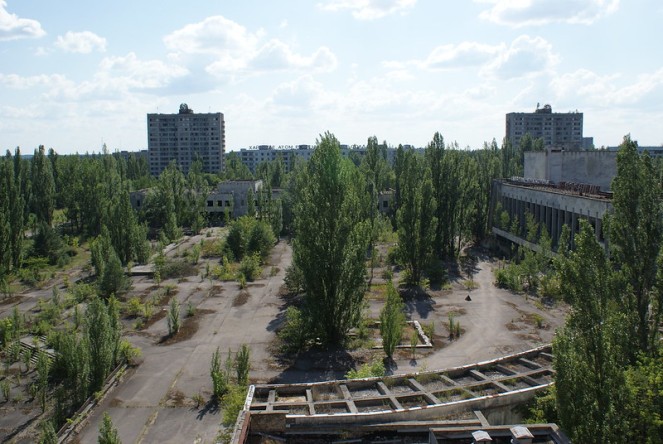
The current cycle started with the conjunction in 1989 which coincided with the fall of the Berlin Wall that year and the collapse of the Soviet Union in 1991. Multiple revolutions and wars erupted in Eastern Europe as nations reclaimed their independence from Russia. Playwright Vaclav Havel, who was critical of totalitarianism, became president of Czechoslovakia in 1989 and made a speech on ‘The Need for Transcendence in the Postmodern World’ (worth reading).
The Tiananmen Square demonstration was crushed by the Chinese state in 1989. In South Africa Nelson Mandela, leader of the ANC, was released from prison in 1990, and apartheid was brought to an end in 1991. The Exxon Valdez oil spill polluted Alaska in 1989, and Iraq invaded Kuwait in 1990 and triggered the first Gulf War over oil in 1991.
On TV, David Lynch melted minds with Twin Peaks in 1990, and key films include The Last Temptation of Christ in 1988, Dead Poet’s Society in 1989, and Dances With Wolves in 1990. Other works include Manufacturing Consent by Noam Chomsky and The Satanic Verses by Salman Rushdie in 1988.
By the sextile in 1995-96, Nelson Mandela had become president of South Africa in 1994, and the Truth and Reconciliation hearings over apartheid crimes started in 1996. Key works include Trainspotting by Irvin Welsh in 1993, The Celestine Prophecy by James Redfield and Philip Pullman’s His Dark Materials in 1995.
Bill Clinton became president of the US in 1993 but by the square in 1998-99 things had turned sour and he was impeached for being a naughty boy in 1998. The following year he signed into law the Financial Services Modernisation Act which became a major cause of the economic crash to come in 2008. Meanwhile, the dot.com bubble finally burst in 2000.
In the UK, demon spawn Tony Blair became prime minister when New Labour was elected in 1997, and the death of Princess Diana led to a period of national mourning (which was bizarre – Brits aren’t known for public displays of emotion, unless they’re drunk 🤪).
The same year saw the start of the Harry Potter books by JK Rowling, and the films started in 2001. Other key films include The Truman Show and Pi in 1998, and The Matrix in 1999. On TV there was a new Golden Age of cable and boxsets which started with shows like Buffy the Vampire Slayer in 1997 and The Sopranos in 1999.
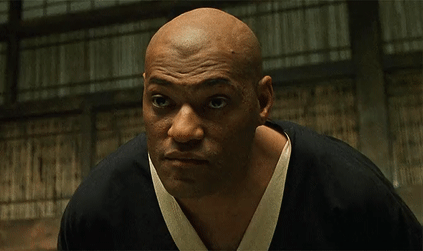
By the opposition in 2006-7 the world was going internet mad and streaming was taking over from physical products like DVDs, with shows like Lost in 2004, Mad Men in 2007, and Breaking Bad and True Blood in 2008. Key movies include V for Vendetta in 2005, Pan’s Labyrinth and Children of Men in 2006. Other works include Stephanie Meyer’s Twilight series in 2005, Suzanne Collins’ The Hunger Games in 2008, and Richard Dawkins made a fool of himself with The God Delusion in 2006.
The boom in property markets driven by dodgy loans finally crashed in the Credit Crunch in 2007 and triggered a worldwide depression, followed by austerity measures. Meanwhile, Hurricane Katrina caused massive floods in New Orleans in 2005 and had a devastating effect on the poor who were unable to evacuate and were abandoned by the authorities. Multiple earthquakes and tsunamis also happened around Indonesia in 2006 and the Solomon Islands in 2007.
The bad weather continued as the trine of 2012-13 drew near and a massive earthquake in 2011 triggered a tsunami in Japan that killed thousands and wrecked the Fukushima nuclear power plant which exploded and leaked waste into the sea. This period coincided with the Uranus Pluto square and people were getting disillusioned with politicians and the old system.
By the square in 2015-16 that disillusionment peaked in populist movements and a pushback against globalism and the establishment. The Brexit referendum in 2016 took the UK out of the European Union, and in the same year, the rise of Trump and his election as US president literally drove some people insane. Fake news went through the roof and many lost themselves in augmented reality and games like Pokemon Go.
Finally, we had the sextile in 2019 just before mass psychosis took hold in 2020 and the world has been circling a drain ever since. Key movies include Joker and 1917, but by now it’s clear that Hollywood is dying…
There were similar changes happening in other parts of the world too and a lot more can be said about the whole thing. For more on how this cycle works, read this great article on the Historical Astrology site, and this excellent archived post on Astro Noetics: Saturn Neptune and the Desert of the Real. For in-depth historical analysis visit the Cycles of History site – Saturn Neptune section here.

Now we come to the new cycle which runs from 2025 – 2061. Here are the dates for the hard alignments:
- Conjunction in 2025 – 2026 in Aries
- Square in 2033 – 2034
- Opposition in 2042 – 2043
- Square in 2052 – 2053
- Conjunction in 2061
The Saturn Neptune conjunction will also sextile Uranus and Pluto, providing some grounding and a reality check to any revolutionary and evolutionary changes. Although the conjunction doesn’t arrive until 2025, Saturn enters Pisces in 2023 where he’ll be in Neptune’s domain so we’ll be dealing with the combination of these two archetypes for many years.
As I said in the introduction to this series, the Saturn Neptune conjunction falls on the apex of the triangle of alignments between all three outer planets. This is an unusual situation because Neptune only does this once every 500 years – the rest of the time, it’s either Uranus or Pluto at the apex. You can read more about that on the fascinating 500 Year Party blog here.
What’s more, this conjunction happens right on the Aries point – the spring equinox – so it should have far-reaching effects around the world. We could see the implosion and dissolution of materialism and scientism and all the power structures that rely on those ideologies. Current events are making that process almost inevitable. The system is unsustainable and it will collapse, the question is when.
In the intro, I also said this moment could be the West’s version of the fall of the Berlin Wall and the end of the Soviet Union. It was French astrologer Andre Barbault who identified the correlation between the Saturn Neptune cycle and events in Russia. He was able to predict the death of Stalin in 1953 and the collapse of the Soviet Union in 1989 long before they happened. More on that here.
The fall of the Soviet Union was preceded by a programme of ‘acceleration’. The government realised it was running out of time so it tried to accelerate the pace of the economy which led to out of control money creation. They were trying to generate economic growth but it just accelerated the collapse until it became inevitable.
The same thing is happening in the West now. Watch this great video from Crypto Rich with Alexander Mercouris and Tom Luongo on that subject here.
The conjunction in 2025-26 falls on the IC of America’s chart which indicates profound change right down to the roots and perhaps the dissolution of its foundations. Maybe the US will go through a similar collapse to the Soviet Union or simply lose its dominant position as the main superpower – arguably already underway with the rise of China and a resurgent Russia waiting in the wings.
Whatever happens, according to Andre Barbault, the current mess will resolve into something uplifting and positive, a period of growth starting in 2026:
“The new world civilisation, the beginnings of which appeared around the year 2000, is taking off here. This entry into the second quarter of a century bears the stamp of the fulfilment of a new age of humanity. … The central and harmonic position of the Saturn Neptune conjunction is above all expressive of a promotion of the lower strata of the world population, of a significant rise in the standard of living of the underprivileged, of a victory over misery won in an unprecedented solidarity.”
Sounds great! 🌈😊
But first we have to live through the collapse of the old system. If the Chernobyl disaster was a foreshadowing of the collapse of the Soviet Union, then what happens at the Saturn Neptune semi-sextile in 2022-23 could provide a similar revelation – starting in April next year. Recent events could provide clues.
Then as Saturn enters Pisces, the old order will slowly begin to dissolve and Saturn’s big boots should have a harder time stomping on faces. Either that or the lies and fraud will be off the scale until they hit a wall with the conjunction in 2026.
Or perhaps Saturn in Pisces will allow more people to see through the lies, leading to massive disillusionment and grief when the realisation of what has been done finally hits home.
Some have called this conjunction a Nuremberg moment, when justice and truth will finally prevail. This would be helped along by Jupiter entering his exultation in Cancer in 2025. By this point, the cabal/big babies running the lies should be on the run and the conjunction in 2026 could be what I call their Michael Clayton moment:
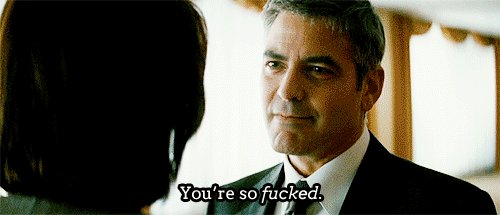
At best, this transit is an opportunity for a new beginning and the start of a cultural renaissance. As the old order crumbles, we can reconnect with the true values of humanity and the deeper consciousness of all beings and recognise our place in the community of life – not just with humans but all beings, perhaps even including the ones we can’t see – a re-enchantment of the world.
The seeds of this transformation will be planted in Aries to reignite the spirit and birth a new era. That birth won’t be easy and will involve a test of faith, integrity, conscience and morality that many will fail.
It will also require a massive clean-up and healing operation. But we will create the new world from the ashes of the old one, using plenty of forgiveness, compassion, truth and reconciliation. And grit and hard work and a willingness to take responsibility for our choices.
Many will wake up to the reality of the illusion as it dissolves over the coming years. As the veil thins, the disillusionment will spread. The awake will need to be ready and on hand to assist those who need guidance along the way.
Whatever happens, the revolution won’t be centrally planned – real revolutions never are. It will come from the people.
More 2020s Transits
Thanks for reading! If you enjoy this blog and would like to support my work, please consider making a donation. Thanks in advance! 🙏❤️



Its also still Russia.
Its perfect timing for Putins demise.
As to reality, England is slowly turning the tanker for the rest of the world who are lost in an upside down Neptune in Pisces ideologically captured World where all healthy boundaries are eroded.
LikeLike
“If the Chernobyl disaster was a foreshadowing of the collapse of the Soviet Union, then what happens at the Saturn Neptune semi-sextile in 2022-23 could provide a similar revelation – starting in April next year.”
What about the Russian Invasion of Ukraine?
LikeLiked by 1 person
Yes – and the sanctions which are probably going to cause more problems for the ‘West’ than for Russia.
LikeLike
Fantastic and comprehensive. Best timeline of the Saturn-Neptune cycle I have read yet. Thoroughly enjoyed.
LikeLiked by 1 person